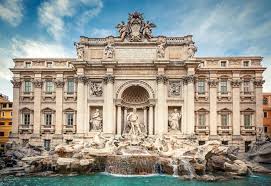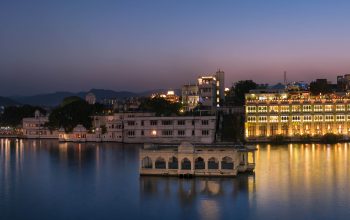Whether you are a seasoned traveler or are new to seeing the wonders of the world, one of the most widely known destinations to visit is Rome. There is a wealth of iconic and historical landmarks housed in the capital city of Italy. From the most popular sights, such as the Colosseum and the Pantheon to the Santa Maria Maggiore and Palatine Hill—there are sights to see and experience all throughout the city. And if you’re looking to take a fun day trip, you might also want to find safe luggage storage in Rome. This way, you’ll be free to go about your day without the hassle of carrying your bags around.
In a bustling city that’s well-known with tourists, it’s important to try to vary your experiences as you explore the many things Rome has to offer. This city is massive, and it can be overwhelming at first, so in between the walking tours of iconic spots, make sure to sit back and enjoy a cup of coffee or a biscotti in a park or safewalk café. Read on to learn more about the XX must-see places in Rome.
The Colosseum
The Colosseum and the Arch of Constantine is the most recognizable monument in Rome, and perhaps Italy in general. It’s worth mentioning that the Colosseum is the largest structure left in all of Roman antiquity. The building itself was started by Vespasian, a Roman emperor in AD 72, after his son Titus added a fourth, towering story. Then, it was inaugurated in AD 80 with a series of heart-pounding, splendid games. The Colosseum was specially created to be large enough for theater performances, festivals, and sporting events. Even the Imperious Court along with high Roman officials attended these events along with the general public, albeit on varying levels of the structure.
The Arch of Constantine was built by the Senate to honor the Roman emperor as “liberator of the city and bringer of peace.” Visitors can take walking tours to learn more about the history of Rome while seeing the major antiquity sites with a knowledgeable guide.
The Centro Storico & Spanish Steps
In the heart of the Centro Storico, the historic center of Rome, are the iconic Spanish Steps. And the surrounding area is literally packed with art-filled churches, stunning palaces, and buzzing squares to spend time strolling the ancient streets.
Plan for an ample amount of time to spend in the Centro Storico from tasting authentic local cuisine to taking in the majesty of the Spanish Steps or just soaking in the area’s unique cultural atmosphere. Within this thriving neighborhood, there are also must-see Roman sights, including the Piazza Navona, the Trevi Fountain and the Basilica of Santa Maria Maggiore. Plus, you can find famous artworks by Bernini and Caravaggio in less well-known churches, such as the Santa Maria del Popolo. And make sure to pause at the gorgeous Spanish Steps, an asymmetrical flight of stairs which lead you up to the Trinitá dei Monti. Fun fact: The boat-shaped fountain at the base of the Spanish Steps is also known as the Barcaccia, created by Pietro Bernini, father of the great Baroque architect Gian Lorenzo Bernini. Via Condotti, leading southwest from Piazza di Spagna, is Rome’s most popular shopping street. The Caffè Greco is famous for the artists, writers, and musicians who have often leisured there.
The Santa Maria Maggiore
The Santa Maria Maggiore is one of Rome’s most magical and exalted churches which has been erected since Pope Liberius had the idea to erect it in the 4th century. And since the 5th century, Catholic Mass has been celebrated here daily. The church has an 86-meter-long interior, separated by 40 columns of marble and four of granite, and the apse added in the 13th century is lined with glittering mosaics of Old and New Testament themes. Also, two popes are buried here, it’s one of Rome’s four papal basilicas, a sacred place of pilgrimage.
The Piazza Navona
Standing as one of Rome’s most well-known Baroque squares, the Piazza Navona has been used for festivals since the Middle Ages. The grand Baroque architecture of the square combines a majestic variation of elements into a stunning, unified design. And if you want to venture out between the Piazza and the Pantheon, the church of San Luigi dei Francesi contains three major paintings by Caravaggio from the late 16th century.
Read Also : How Many Types of Variable Expense Are There? And What Are They?
The Pantheon
Also, one of the most iconic and most preserved monuments of Roman history is the Pantheon. Built approximately 2,000 years ago and rebuilt after fire damage in AD 80, this structure shows off the remarkable technical skills of ancient Roman builders. Its 43-meter dome is suspended without any visible supportive structure that is actually hidden inside the walls. Plus, the nine meter central opening provides a direct, bright path to the heavens above. Did you also know that the Pantheon’s height is the same as its diameter? Another stunning architectural accomplishment. This landmark is also the burial place of Italian kings, such as Victor Emmanuel II, and other famous Italians, including the well-known painter, Raphael.



